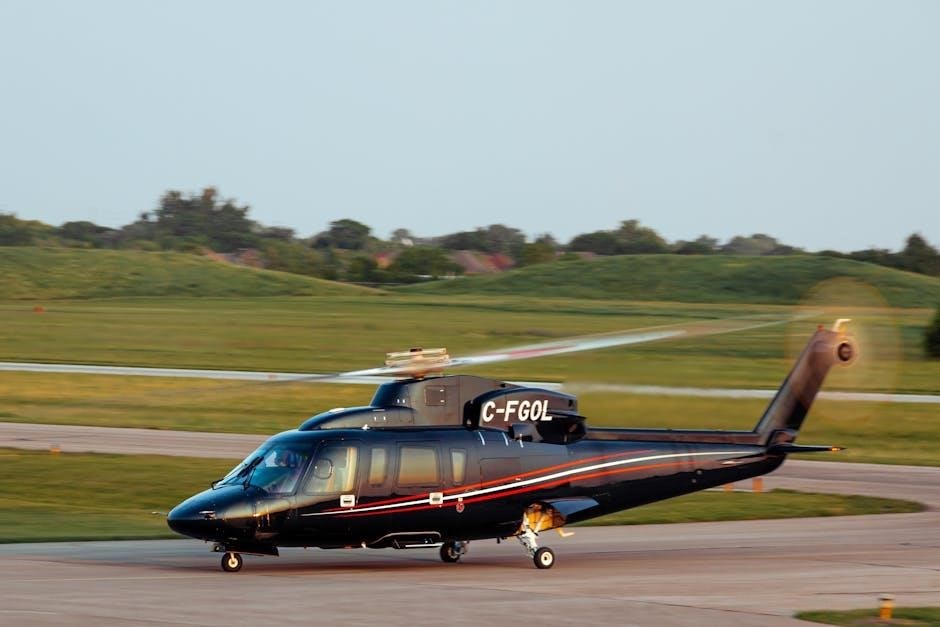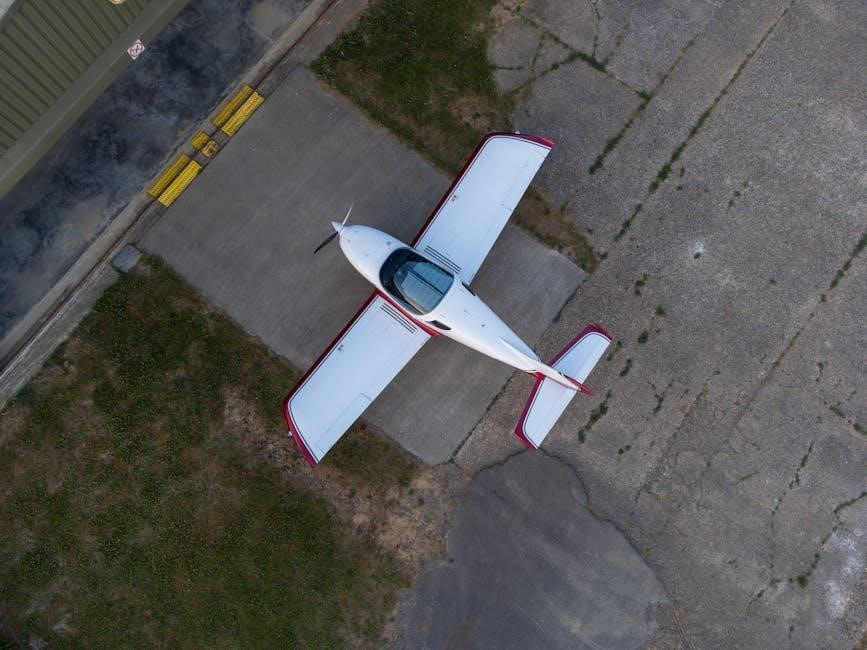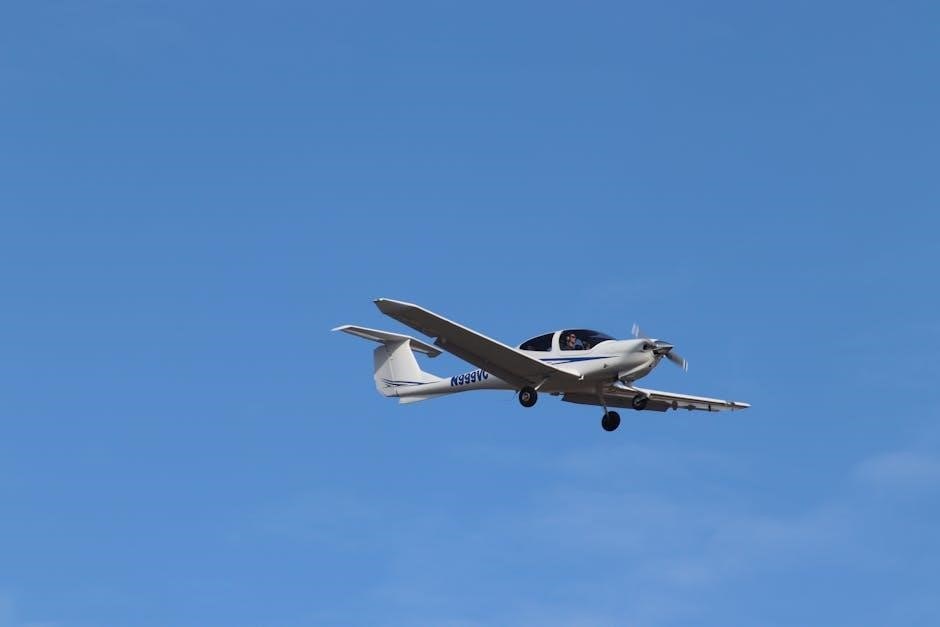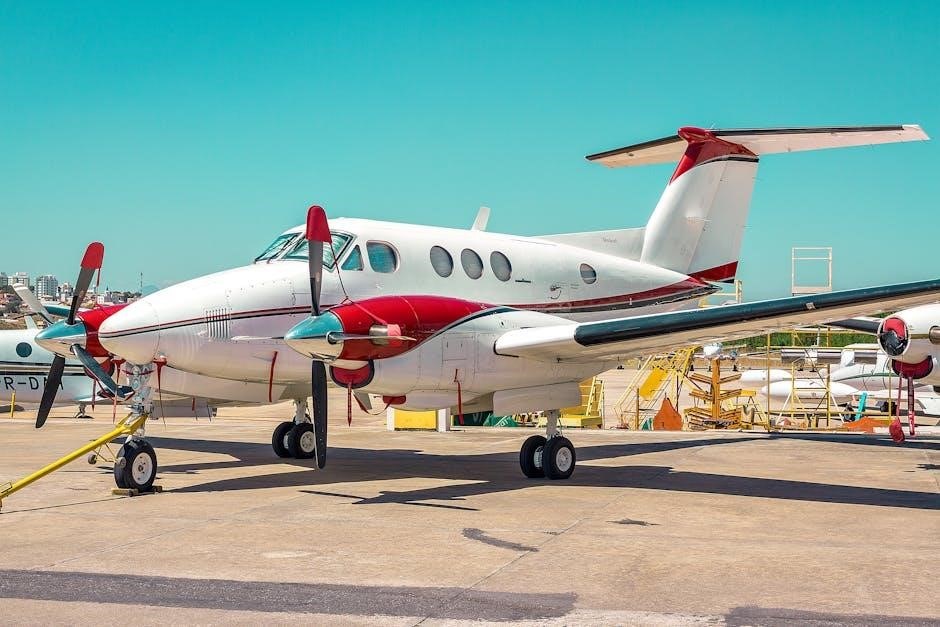private pilot airman certification standards pdf

The FAA’s Private Pilot Airman Certification Standards (ACS) provide a comprehensive guide for students, instructors, and examiners, outlining the knowledge and skills required for certification. It integrates aeronautical knowledge, risk management, and flight proficiency, ensuring a structured approach to pilot training and evaluation.
Overview of the Private Pilot Airman Certification Standards (ACS)
The Private Pilot Airman Certification Standards (ACS) is a comprehensive document developed by the FAA to outline the knowledge, skills, and risk management practices required for private pilot certification. It serves as a guide for applicants, instructors, and examiners, ensuring consistency in training and evaluation. The ACS integrates aeronautical knowledge, flight proficiency, and safety practices, providing a clear framework for achieving certification.
The ACS includes detailed standards for areas such as regulations, weather, navigation, aircraft systems, and emergency procedures. It also outlines practical test maneuvers and evaluation criteria, ensuring applicants meet rigorous safety and competency standards. Regular updates reflect advancements in aviation technology and training methodologies, making the ACS a dynamic and essential resource for private pilots.
Importance of the ACS in Pilot Training and Certification
The ACS is a critical tool in pilot training, providing a structured framework for applicants, instructors, and examiners. It ensures consistency in training and evaluation, aligning with FAA standards. By integrating aeronautical knowledge, risk management, and flight proficiency, the ACS helps applicants develop the skills and judgment needed for safe and competent flight operations. Its clear guidelines and evaluation criteria ensure that pilots meet rigorous safety standards, making it indispensable for achieving certification. The ACS also supports the FAA’s goal of modernizing aviation training and maintaining high levels of aviation safety.

Eligibility Requirements for Private Pilot Certification
To qualify, applicants must meet specific age, medical, and educational requirements, complete required flight training hours, and demonstrate aeronautical knowledge and flight proficiency as outlined in the ACS.
Age, Medical, and Educational Requirements
Applicants for a private pilot certificate must be at least 17 years old, hold a valid U.S. medical certificate, and demonstrate basic aeronautical knowledge. A high school diploma or equivalent is typically required. They must undergo a Class III medical examination by an FAA-designated Aviation Medical Examiner (AME) to ensure physical fitness for flying. Non-U.S. citizens may need to complete additional background checks. These requirements ensure candidates meet the necessary standards for safe and competent flight operations, aligning with the FAA’s guidelines for private pilot certification as outlined in the ACS document.
Flight Experience and Training Hours
To qualify for a private pilot certificate, applicants must accumulate a minimum of 40 flight hours, including 20 hours of flight training and 10 hours of solo flight time. This includes five hours of cross-country flying, three solo takeoffs and landings at another airport, and one cross-country flight of at least 150 nautical miles. Additionally, three hours of night flight training and one solo night takeoff and landing are required. These requirements ensure comprehensive flight experience, covering various conditions and scenarios to prepare pilots for safe and competent operations, as specified in the ACS standards for private pilot certification.

Aeronautical Knowledge Areas
The ACS outlines key knowledge areas, including regulations, weather, navigation, and aircraft systems, ensuring a comprehensive understanding of aviation principles essential for safe and effective flight operations.
Regulations and Aeronautical Information
The ACS emphasizes understanding Federal Aviation Regulations (FARs), specifically Title 14 CFR Part 61 and 91, which govern pilot certification and flight operations. Students must familiarize themselves with aeronautical information sources, such as the Aeronautical Information Manual (AIM) and aeronautical charts, to ensure compliance and safe navigation. Knowledge of airspace classifications, air traffic control procedures, and weather briefings is also critical. This section ensures pilots can interpret and apply regulatory requirements and aeronautical data effectively, forming the foundation of legal and safe flight operations.
Weather and Weather Services
The ACS requires pilots to understand various weather phenomena, including METAR, TAF, AIRMET, SIGMET, and PIREP reports. Accurate interpretation of these sources is critical for pre-flight planning and in-flight decision-making. Pilots must analyze weather conditions, forecasts, and advisories to assess risks and ensure safe flight operations. This includes recognizing potential hazards like thunderstorms, icing, turbulence, and low visibility. The ACS emphasizes the importance of integrating weather information into flight planning and navigation, ensuring pilots can adapt to changing conditions effectively. Proficiency in weather analysis is essential for maintaining situational awareness and operational safety.
Navigation and Communication
The ACS emphasizes the importance of navigation and communication skills for private pilots. Pilots must demonstrate proficiency in using navigation systems, including GPS, VOR, and NDB, to determine aircraft position and course. Effective communication with air traffic control (ATC) and other aircraft is critical, including standard phraseology and emergency protocols. Understanding radio communication procedures, such as call signs, clearances, and instructions, ensures safe and efficient flight operations. The ACS also covers emergency communication techniques, like MAYDAY and PAN-PAN declarations, to handle critical situations effectively. These skills are essential for maintaining situational awareness and ensuring safe interactions within the aviation environment.
Aircraft Systems and Performance
The ACS requires pilots to understand aircraft systems and performance characteristics. This includes knowledge of propulsion, electrical, fuel, and hydraulic systems. Pilots must demonstrate proficiency in interpreting aircraft performance data, such as climb rates, cruise speeds, and fuel efficiency. Understanding the aircraft’s limitations and operating envelopes is crucial for safe flight operations. The ACS also emphasizes the importance of applying this knowledge during pre-flight planning and in-flight decision-making. Additionally, pilots must be familiar with the aircraft’s flight manual (POH/AFM) to ensure safe and efficient operation. This knowledge ensures pilots can manage aircraft systems effectively and make sound judgments during various flight scenarios.

Flight Proficiency Skills
Flight proficiency skills include takeoff, landing, enroute navigation, and emergency procedures. Pilots must demonstrate safe aircraft handling and adherence to standardized maneuvers as outlined in the ACS.
Pre-Flight and Post-Flight Procedures
Pre-flight procedures involve aircraft inspections, weather checks, and system verifications to ensure safety. Post-flight tasks include securing the aircraft, logging flight time, and reporting discrepancies. These steps are critical for maintaining aircraft airworthiness and ensuring compliance with FAA standards, as detailed in the ACS document; Proper execution of these procedures is assessed during practical tests to validate a pilot’s ability to manage operational responsibilities effectively.
Takeoff and Landing Techniques
Takeoff and landing techniques are critical skills assessed under the ACS, emphasizing precise airspeed control and aircraft configuration; Pilots must demonstrate smooth rotation at Vr, climb at Vy, and maintain centerline alignment. Landings require stable approaches, with touchdown at the recommended airspeed and minimal drift. The ACS specifies evaluation criteria, including the ability to handle crosswinds and go-around procedures. Proficiency in these maneuvers ensures safe operations and adherence to FAA standards, as outlined in the Private Pilot Airman Certification Standards document.
Enroute and Navigation Skills
Enroute and navigation skills are essential for safe flight operations, as outlined in the FAA’s Private Pilot Airman Certification Standards. Pilots must demonstrate proficiency in navigating using VOR, GPS, and pilotage, ensuring adherence to ATC instructions and flight plans. Time and fuel management are critical, with accurate navigation techniques and regular position reports. The ACS emphasizes maintaining situational awareness, correcting for wind drift, and adhering to altitude and heading requirements. These skills are evaluated during cross-country flights, ensuring the pilot can safely and efficiently navigate to the destination while complying with all regulations and standards.
Emergency Procedures and Safety Practices
Emergency procedures and safety practices are critical components of the Private Pilot ACS, ensuring pilots can respond effectively to unexpected situations. This includes engine failures, system malfunctions, and medical emergencies. Pilots must demonstrate the ability to recall and execute emergency checklists, manage aircraft systems, and maintain situational awareness. The ACS emphasizes safe practices such as pre-flight inspections, in-flight monitoring, and decision-making to avoid hazardous conditions. Proper communication with ATC and passengers is also required. These skills are evaluated during flight tests, where pilots must apply standardized procedures to mitigate risks and ensure safe outcomes, adhering to FAA certification standards.

Medical Certification Standards
Medical certification is crucial for ensuring pilots’ fitness to fly, with the FAA requiring a medical examination by an approved Aviation Medical Examiner (AME) for all private pilots.
FAA Medical Requirements for Private Pilots
FAA medical certification ensures pilots meet health standards for safe flight operations. Private pilots must obtain a Class III medical certificate from an FAA-designated Aviation Medical Examiner (AME). The medical evaluation includes a review of medical history, vision, hearing, and physical condition. Vision must be 20/40 or better with or without correction, and 20/100 uncorrected. Blood pressure must not exceed 155/95. Pilots with certain medical conditions may require special issuance or restrictions. The certificate is valid for 60 months for pilots under 40 and 24 months for those 40 and older. Compliance with these standards ensures pilot health and aviation safety.
Medical Examination Process and Documentation
The FAA medical examination process requires scheduling an appointment with an FAA-designated Aviation Medical Examiner (AME); Pilots must provide identification, medical history, and any relevant records. The exam assesses vision, hearing, blood pressure, and overall physical condition. Documentation includes a completed FAA Form 8500-8 and any supplementary medical records. The AME submits the results to the FAA, and upon approval, issues a medical certificate. Pilots must maintain a valid medical certificate, with renewal required every 24-60 months based on age and certificate class. Proper documentation ensures compliance with safety regulations and supports the certification process.

Private Pilot Knowledge Test
The FAA Private Pilot Knowledge Test evaluates aeronautical knowledge, including regulations, weather, navigation, and aircraft systems. It consists of 60 questions with a 2.5-hour limit, requiring thorough preparation using official study guides and resources to ensure readiness for the certification process.
Test Format and Content
The FAA Private Pilot Knowledge Test consists of 60 multiple-choice questions, with a 2.5-hour time limit. The test evaluates knowledge in areas such as regulations, weather, navigation, aircraft systems, and performance. Questions are based on the Airman Certification Standards and require a minimum score of 70% to pass. Topics include aerodynamics, aircraft performance, weather services, and decision-making. The test format ensures applicants demonstrate comprehensive understanding of aviation principles and safe practices. Proper preparation using FAA-approved study materials, such as the Private Pilot ACS and online resources, is essential for success.
Study Materials and Preparation Strategies
Key study materials include the Private Pilot Airman Certification Standards (ACS), FAA publications like Aviation Weather, and online resources such as Sporty’s Complete Flight Training Course. The ACS outlines specific knowledge areas and provides a structured approach to preparation. Candidates should create a study plan, focusing on weak areas identified through practice tests. Utilizing FAA-approved online courses and study guides ensures alignment with test content. Regular review of weather services, navigation, and aircraft systems is crucial. Practice tests help familiarize applicants with the format and timing, while instructor guidance enhances understanding of complex topics. Consistent study and active learning strategies are essential for success.

Practical Test Standards
The Practical Test Standards outline specific flight maneuvers and evaluation criteria for private pilot certification, ensuring consistency and safety in the testing process.
Flight Test Maneuvers and Evaluation Criteria
The flight test for private pilot certification includes specific maneuvers such as takeoffs, landings, stalls, and emergency procedures. Each maneuver is evaluated based on precise criteria to ensure safety and proficiency. Examiners assess the applicant’s ability to perform tasks accurately, maintain aircraft control, and apply correct procedures. The evaluation also focuses on decision-making and adaptability under various flight conditions. Candidates must demonstrate consistent adherence to the standards outlined in the FAA-S-ACS-6B document, which provides detailed checklists and performance guidelines. Proper preparation and familiarity with the ACS ensure a successful practical test.
Oral Exam and Aircraft Familiarity
The oral exam assesses the applicant’s aeronautical knowledge, aircraft systems understanding, and decision-making skills. Examiners evaluate familiarity with weather, navigation, regulations, and emergency procedures. Applicants must demonstrate a deep understanding of the aircraft’s performance, limitations, and handling characteristics; Aircraft familiarity includes knowledge of the Pilot Operating Handbook (POH) and Aircraft Flight Manual (AFM). The examiner also verifies the applicant’s ability to conduct proper pre-flight inspections and understand aircraft-specific emergency procedures. The ACS ensures a comprehensive evaluation of both theoretical knowledge and practical aircraft familiarity, ensuring safe and competent flight operations. Proper preparation aligns with the FAA-S-ACS-6B guidelines for certification.

Maintaining and Renewing Certification
To maintain certification, private pilots must complete a flight review every 24 months and stay current with medical requirements. Continuing education and professional development are encouraged.
Flight Review Requirements
Private pilots must undergo a flight review every 24 months to maintain certification. This review includes a discussion of the pilot’s flight experience and a flight test. The ground portion covers regulations, weather, navigation, and aircraft systems. The flight portion evaluates takeoff, landing, emergency procedures, and navigation skills. This ensures pilots stay proficient and updated on safety practices. The review is conducted by a certified flight instructor and is essential for maintaining active flying privileges. It also provides an opportunity for professional development and addressing any gaps in knowledge or skills, ensuring continued safe and effective flight operations.
Continuing Education and Professional Development
Continuing education is crucial for maintaining and enhancing pilot proficiency. The FAA encourages pilots to engage in ongoing learning through approved courses, workshops, and seminars. These programs cover topics such as weather, navigation, and aircraft performance, ensuring pilots stay updated on safety practices and regulatory changes. Online resources, including FAA publications and interactive tools, are readily available. Pilots are also encouraged to participate in flying clubs and online forums to share experiences and gain insights. Regular engagement in professional development activities helps pilots refine their skills, adapt to new technologies, and uphold the highest standards of aviation safety and effectiveness.

Additional Resources and References
FAA publications, such as FAA-S-ACS-6B and FAA-G-ACS-2, provide detailed guidance; Online courses, study guides, and resources like Sportys Complete Flight Training Course are available to support training and certification.
FAA Publications and Guidelines
The FAA offers essential publications for private pilot certification, including FAA-S-ACS-6B (Private Pilot Airman Certification Standards) and FAA-G-ACS-2 (Companion Guide for Pilots). These documents provide detailed guidance on aeronautical knowledge, risk management, and flight proficiency. Additionally, the Private Pilot Practical Test Standards (FAA-S-8081-17A) outlines evaluation criteria for flight tests. The FAA website hosts these resources in PDF format, ensuring accessibility for applicants. These official materials are indispensable for understanding certification requirements and preparing for both the knowledge and practical tests. They align training with FAA standards, ensuring a comprehensive and structured approach to becoming a private pilot.
Online Courses and Study Guides
Online courses and study guides are invaluable resources for private pilot certification. Platforms like Sporty’s Complete Flight Training Course offer structured lessons aligned with ACS standards. The ACS Study Guide provides detailed explanations of aeronautical knowledge areas. Additionally, the FAA website hosts downloadable PDFs, such as FAA-S-ACS-6B and FAA-G-ACS-2, which are essential for self-study. These materials include interactive modules, practice tests, and video cross-references, ensuring comprehensive preparation for both the knowledge and practical exams. Online resources are regularly updated to reflect the latest ACS revisions, making them a reliable choice for applicants seeking efficient and effective study tools.

Future Developments in Airman Certification Standards
The FAA continuously updates the ACS document to reflect advancements in aviation technology and training methodologies. Revisions ensure standards remain relevant and aligned with industry needs.
Updates and Revisions to the ACS Document
The FAA periodically revises the Airman Certification Standards (ACS) document to incorporate feedback from stakeholders and reflect advancements in aviation technology and training methods. These updates ensure that the standards remain current and align with the latest safety practices and regulatory requirements. Revisions are typically announced through official FAA publications and are made available in PDF format on the FAA’s website. Pilots and instructors are encouraged to stay informed about these changes to maintain compliance and enhance their training effectiveness. Regular reviews and updates help uphold the integrity and relevance of the certification process.
Impact of Technological Advancements on Pilot Training
Technological advancements have significantly enhanced pilot training by providing immersive and accessible tools. Simulation software and virtual reality (VR) headsets now offer realistic training environments, enabling pilots to practice complex maneuvers safely. The FAA integrates these technologies into the ACS, ensuring training methods evolve with industry standards. Online courses and digital study guides complement traditional instruction, making learning more flexible. These innovations improve knowledge retention, reduce costs, and enhance safety. They also ensure pilots are better prepared for real-world scenarios, aligning training with modern aviation demands and improving overall certification effectiveness.